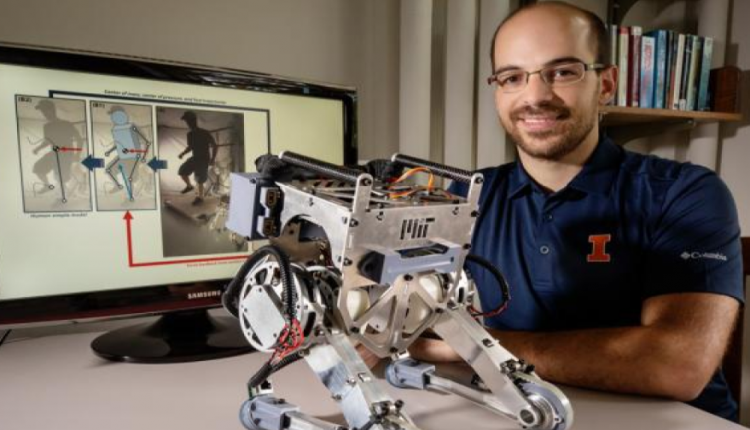Designed to be stronger and far less easily damaged than humans, increasingly robotic research focuses on developing robots with fine motor skills.
After watching the 2011 Tohoku, Japan, earthquake, tsunami and subsequent Fukushima Dai-ichi nuclear plant disaster unfold, João Ramos, a mechanical science and engineering professor at the University of Illinois and Professor Sangbae Kim at MIT concluded that if a robot had been able to enter the power plant after the disaster, things could have ended differently.
Human-operated robotics are now a step closer with their creation of a two-legged unit, named Little Hermes, that can walk, run, jump and interact with the environment in synchrony with a human operator. A small-scale bipedal robot designed to go places deemed unsafe for humans, Little Hermes has quick, human-like reflexes and is guided by a person from a remote location who feels the same physical forces the robot is experiencing.
Much current human-operated robotics research does not include any force-feedback information to the operator, Ramos said. If human-assisted robots are going to interact with the environment in a way comparable to humans, he said, the operators will need to feel the same forces that the robot “feels.”
The team developed a motion-capture suit, which is like an exoskeleton worn by a human operator, Ramos said. The suit captures the operator’s motion and the forces the operator exerts on the environment to move, and transfers that data to the robot, which reproduces the motion with little to no delay.
However, robots do not have an inherent sense of balance like a person does, so the researchers fit the operator with a vest that sends force-feedback information from the robot to the operator.
“If the robot begins to fall, the operator feels a push in that direction through the vest,” Ramos said. “Naturally, the operator’s reaction is to take a step to balance themselves, and the robot does the same, synchronously, preventing it from tipping over.”
Much of the current robotics research focuses on developing fully automated units, Ramos said. “I believe that we will achieve fully autonomous robotics at some point, but that is still pretty far in the future. It is advantageous to continue work with human-operated robotics rather than putting all of our efforts into programming fully autonomous robot technology. This way, humans still maintain a considerable level of control.”
There are a variety of advancements in store for Little Hermes, the researchers said. For instance, the teleoperation between the robot and operator happens through a wired side-by-side interface, but the researchers plan to use wireless technology, similar to what is used to control drones.
“We also plan to develop robot-to-human force-feedback devices to other parts of the body like the feet and hands,” Ramos said. “Additionally, everything we have developed so far is not constrained to bipedal robots; any of the technology transfers easily to other mobile systems like quadrupedal and wheeled robots.”

